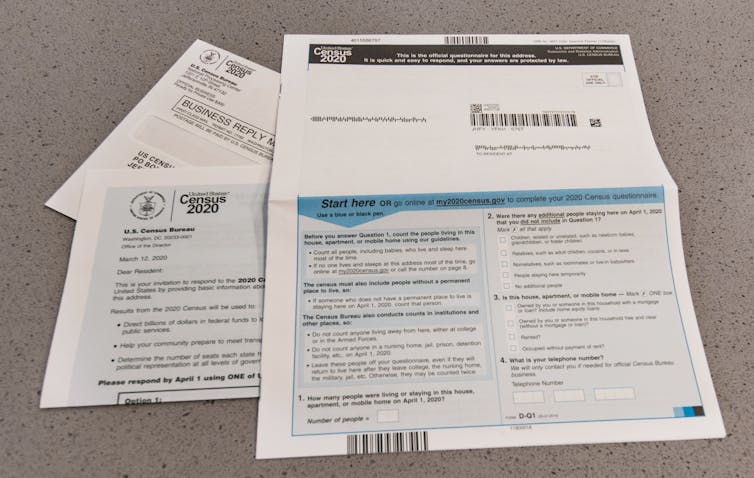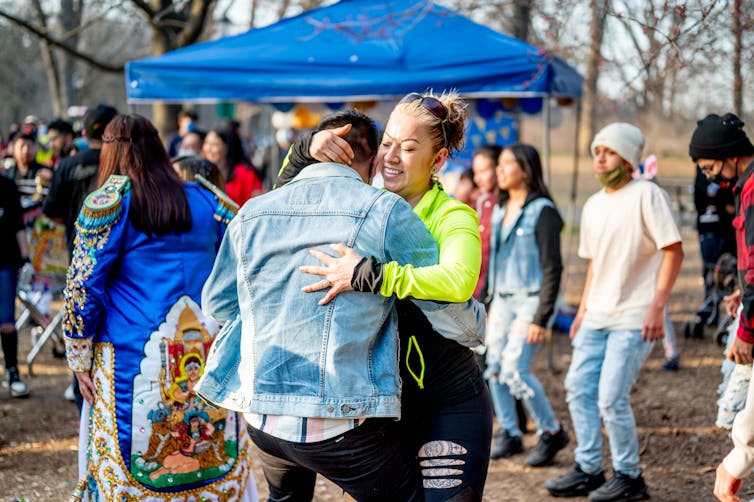
As I opened a recent email from my local grocery store chain advertising Hispanic Heritage Month – it runs from Sept. 15 to Oct. 15 each year – I was surprised to see it highlighting recipes from four distinct regions: Mexico, Central America, the Caribbean and South America.
The advertisement rightly noted that while corn and beans have framed much of what in the United States is considered “Hispanic” foods, Latin America has a much greater diversity of foods. Its cuisine, which began long before the Spanish or other colonizers came to the Americas, continues to flourish.
While many of us Latine – an alternative term for Latinos or Latinx that I prefer – embrace our European heritage, we also embrace our Indigenous and African heritage.
In recent decades, many Latin American nations have officially recognized their Indigenous and Afro-descendent populations as distinct groups with unique histories, cultures, foods and languages.
Countries across the Americas, including the United States, have revised their census questions to better understand their populations, enabling them to create more inclusive policies that actually address people’s needs – and to recognize the too-often hidden achievements of these groups.
Census changes in Latin America
Some Latin American countries, such as Peru, have counted their Indigenous population for over a century. But with the exception of Brazil and Cuba, Latin American countries generally excluded race on their national census, allowing economic and social inequalities to flourish undocumented.
The effort to better capture both Indigenous and Afro-descendant populations in Latin America began around the turn of the 21st century.
Uruguay, a small and prosperous South American country, long portrayed itself as white and European despite being home to Afro-Uruguayans descended from enslaved Africans. In 1996, under pressure from Afro-descendent activists, it added race to its national household survey. That census had census workers identify the respondents’ race and found the country to be 6% Afro-descended and revealed stunning racial disparities in education, income and employment. When in 2006 Uruguayan census-takers began asking residents to state their own racial identity, the Afro-descended population jumped to 10%. This data shift had important implications when Uruguay implemented race-based affirmative action a few years later.
In Mexico, where Indigenous identity had previously been linked only to speakers of one of the country’s 68 Indigenous languages, the census was changed in 2020 to ask if respondents self-identified as Indigenous or belonged to a community that identified as Indigenous. The result was an increase of 7.1 million people to 23.2 million who identified as Indigenous. The same change targeting the Afro-Mexican population identified a previously unrecognized population of 2.5 million.
‘Some other race’
The U.S. added a question about Hispanic descent to the 1970 census long form, and to the short form in 1980. The question asked, “Is this person of Hispanic/Spanish descent?” If the answer was Yes, these were following options: Mexican or Mexican-American or Chicano; Puerto Rican; Cuban; Other Spanish/Hispanic.
In subsequent decades, small changes were made such, as including the word “Latino” and allowing those who choose “other” in the national origin category to write in a response, with suggestions of “Argentinian, Colombian, Dominican, Salvadoran, Spaniard, and so on.” In 2020, the census allowed respondents to identify as “multiracial.”

The U.S. Census Bureau argues that its categories now adequately capture the heritage of the 62.6 million Hispanics that flourish in the U.S. “because all detailed Hispanic origin groups are included in the newly combined code list.”
In fact, however, if your heritage stems from one of the hundreds of Indigenous or Afro-descended groups in Latin America, these identities remain outside of the way the U.S. captures race among the Hispanic populations. That may explain why, according to the Census Bureau “the vast majority (94%) of responses to the race question that are classified as Some Other Race are from people of Hispanic or Latino origin.”
Overgeneralized and under-recognized
When the fixed categories of a census erase the diversity of a population, the gross miscalculations that result may harm a country’s ability to appropriately respond to the needs of its people.
For example, the overgeneralizing of U.S. Hispanics hurts the quality of American education and health care when these institutions assume that Latin American heritage communities speak Spanish. In addition to Indigenous languages, Latino Afro-descendant populations may not speak Spanish but rather may speak French or Haitian Creole, Portuguese or an Indigenous language. If they are from the Miskito Coast of Nicaragua, they may speak an English Creole.
These language differences reflect unique cultures and histories that relate to how people engage with doctors, teachers, politicians and much more.
Failing to recognize the diversity of Hispanics also creates frequent election surprises in the U.S. For example, pollsters got the Latino vote all wrong in 2020 by lumping together 32 million people with diverse political opinions and national origins as “Latino.” Democrats arguably made the same mistake in 2018.
In overgeneralizing Hispanics, the U.S may also overlook – to its own detriment – the knowledge and experience of a culturally unique people who bring with them alternative understandings of the world, some of which I’ve studied as an anthropologist focused on food security, migration and health in Latin America. These include agricultural practices that can aid American farmers in responding to the global climate crisis and Mesoamerican strategies for health based on communal care and traditional remedies.
A growing community with more to offer
Despite its limitations, U.S. census data clearly shows that the Hispanic population continues to grow. While the overall U.S. population increased 7% between 2010 and 2020, the Hispanic population expanded by 23%. Today, 1 in every 5 people in the U.S. identifies with Hispanic or Latino heritage.
This growth is particularly notable in the South – in states like Georgia and North Carolina – and in rural areas. The Hispanic population has become a demographic lifeline for parts of small-town America that experienced significant population loss in the late 20th century.
Hispanic communities have also reinvigorated urban neighborhoods as they open small businesses.

Rebuilding cities, stabilizing rural counties, expanding local economies – these are among the group contributions made by the community of Americans celebrated each year during Hispanic Heritage Month.
The better we understand the nuances of this large population, the better we will understand who we are as a nation – and benefit more fully from our diversity.![]()
Ramona L. Pérez, Professor of Anthropology, San Diego State University
This article is republished from The Conversation under a Creative Commons license.

